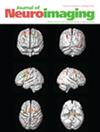Impact of Childhood Neighborhood Deprivation on White Matter and Functional Connectivity During Adolescence
Abstract
Background and Purpose
Socioeconomic determinants of health impact childhood development and adult health outcomes. One key aspect is the physical environment and neighborhood where children live and grow. Emerging evidence suggests that neighborhood deprivation, often measured by the Area Deprivation Index (ADI), may influence neurodevelopment, but longitudinal and multimodal neuroimaging analyses remain limited.
Methods
We examined the association between childhood neighborhoods and brain white matter (WM) microstructural integrity using a large, demographically representative cohort from the Adolescent Brain Cognitive Development Study. We analyzed the relationship between ADI and MRI metrics of WM microstructural integrity and resting-state funtional magnetic resonance imaging (rs-fMRI) connectivity in children with data at baseline (mean age of 9.9 years) and follow-up (mean age 12.0 years), with a sample size of n = 2615.
Results
Children living in poorer neighborhoods (higher ADI) showed lower brain WM microstructural integrity at baseline and follow-up, even after adjusting for age, sex, race/ethnicity, head size, body mass index, parental education, and income levels. This reduced microstructure was seen in critical tracts, such as the superior longitudinal fasciculus, corpus callosum, and the uncinate. Additionally, baseline and follow-up rs-fMRI analysis revealed that children living in poorer neighborhoods had decreased connectivity within the retrosplenial-temporal network and between higher-order networks, such as the cingulo-opercular network.
Conclusions
These findings highlight the influence of neighborhood socioeconomic disadvantage on both WM microstructural integrity and functional brain connectivity in the preadolescent brain. Children from more deprived neighborhoods showed reduced integrity in key WM tracts and disrupted connectivity within and between higher-order networks.

 求助内容:
求助内容: 应助结果提醒方式:
应助结果提醒方式:


